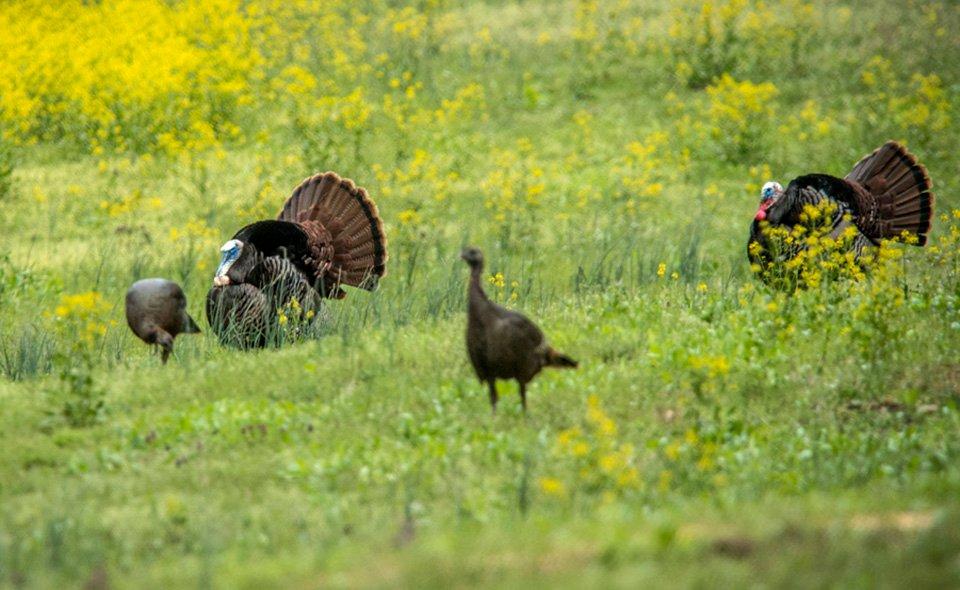This science-based management effort is to boost turkey breeding success as populations decline
Alabama's 2020 spring turkey kill on opening weekend was 43% higher than in 2019. This no doubt made for a bunch of happy hunters.
Increased success and overall participation is also good news for wildlife agencies and regional economies. But with it comes a challenge: Can existing turkey populations sustain the pressure? And what adjustments can wildlife agencies make?
The Alabama Conservation Advisory Board is looking to lower the limit to three gobblers from the longstanding tradition of five birds and, more importantly, to start season dates later.
The loss of habitat. Predators exacting their toll on eggs and poults. Disease among wild turkeys. Weather adverse to hatching success. These and other factors affect wild turkey populations — managing the hunt is but one. And it's one that management officials can use to try and effect desired results.
Enter Michael Chamberlain, the University of Georgia's Terrell Professor of Wildlife Ecology and Management.
Chamberlain, a conservation-minded turkey biologist and avid hunter, is spearheading an effort to rethink how we manage wild turkeys. His detailed studies show that killing dominant, often highly vocal, gobblers too early — driven in part by opening days, weekends, and season hunting dates established by game managers — dramatically affects the resulting chain of breeding events.
And he's spreading the word to all who'll listen, including state game managers.
[Related: Are Turkey Seasons Opening Too Soon?]
Gobbling, Nesting, and Hunting Factors
Think of this early vocal peak among male breeders as a gobbling competition, with these bearded birds proclaiming their presence and territory and availability to hens. This often comes well before hen receptivity.
Since the first gobbling peak starts roughly 45 days before the hen nesting period commences, as male turkeys boldly announce their presence in what Chamberlain likes to refer to as an exploded lek, breeding can be disrupted if seasons start too early and male birds are tagged and taken out of the picture.
As a result, seasons must be coordinated to allow for breeding activity to take place without interruption. Chamberlain's well-documented studies show roughly 80% of the turkey kill occurs before the peak of incubation. In short, dead gobblers equal no breeding with available hens. And so the breeding effort is extended by hens, Chamberlain's studies show, with fewer gobblers left to breed.
Here's the tricky part, and the hard truth. Yep, we hunters love hard-gobbling birds. Vocal turkeys are easier to locate, often prime for calling in. If season dates place us closer to that first gobbling peak, our chance at success increases. Push season dates further ahead in the calendar though, and gobblers might become more elusive in the process. We hunters call it a lull as gobblers are henned up — in truth, it's turkeys being turkeys and flocking together to breed. That's the natural order of things.
"Since the first gobbling peak starts roughly 45 days before the hen nesting period commences, as male turkeys boldly announce their presence in what Chamberlain likes to refer to as an 'exploded lek,' breeding can be disrupted if seasons start too early and male birds are tagged and taken out of the picture."
Male birds will gobble on the roost to call in their hens and go silent on the ground. This henned-up, shut-mouthed time isn't popular with some turkey hunters, and the source of occasional ego-driven whining back in hunting camp. The kicker is: It increases the ability for hens to breed with gobblers. As a result, it's better for conservation, breeding, nesting, hatching.
Later on, as hardcore turkey hunters know, the second peak of gobbling — coming as hens sit on nests — reboots your ability to find late-season male birds and call them in.
Management changes often come with public-relation challenges. Keeping a broad range of hunters happy isn't always easy. Providing gobblers and hens enough opportunity to get together, to breed, for hens to nest, and to hatch poults also remains game management's aim.
It's something Alabama and other states are seeking to find an answer to. And again, as mentioned earlier, it's not the only mortality factor in a wild turkey's quest for survival as a prey species.
[Related: Southeast Turkey Hatch Results]
Adjustments and Trends
Any change to the Alabama 2021 spring turkey season dates and adjusted bag limit will be discussed in February. Across the Southeast, and not just Alabama, wild turkey populations are also in decline.
Other states across the South have made similar adjustments. South Carolina, for instance, opted for later opening dates in its regional game zones during the recent 2020 spring season. Also, while the season limit sits at three gobblers per residents (two for nonresidents), hunters were only permitted to take one turkey during the season's first 10 days.
South Carolina turkey tags now come with an add-on cost as well ($5 for three resident birds; $100 for two nonresident turkeys), a win for turkey research.
Doing what we can as hunters and conservationists is the aim. Will the idea sit well with all concerned? We'll see.







